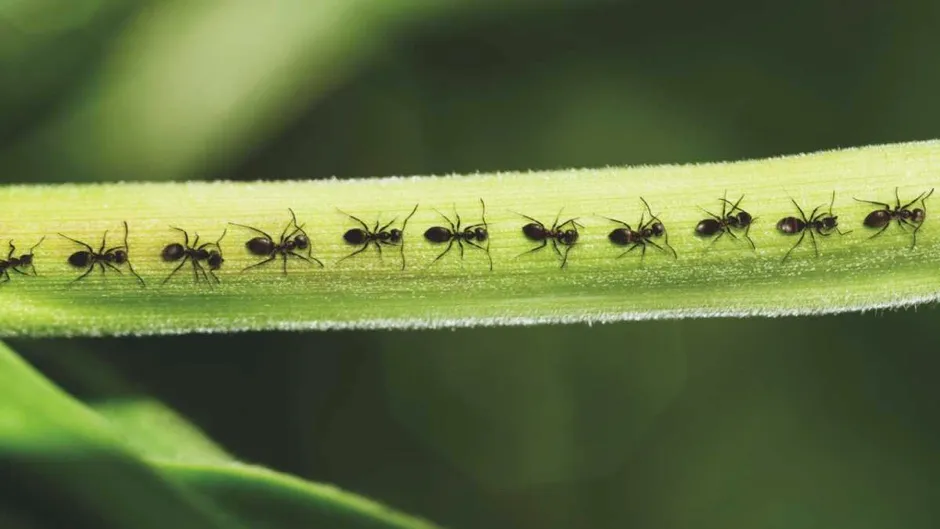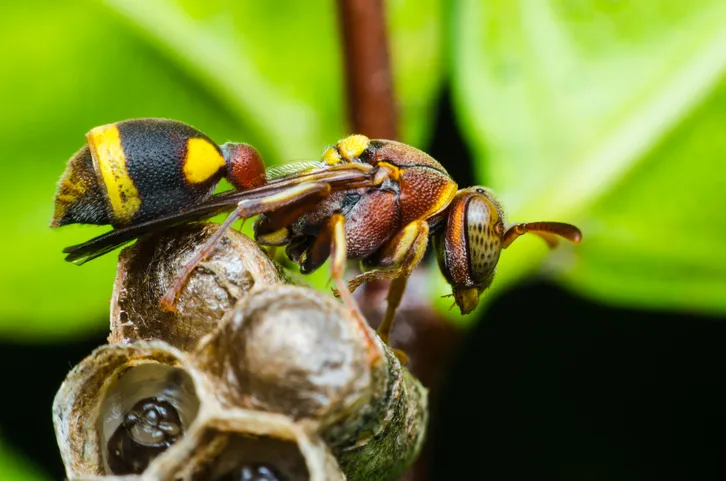Insects are vital to the functioning of nature and therefore to our lives. But they are also amazing creatures, living bizarre and fascinating lives right under your nose. Here are ten extraordinary facts about insects:
1
Insects come by the billion
Like it or not, the world’s insects vastly outnumber us humans. Rough estimates place the number of insects living, right now, in the range of one to ten quintillions. That means there are more insects than sand grains on all the world’s beaches. If we wanted to share all living insects between us, there would be 200 million of them for each of us.
They also rule when it comes to number of species. Insects make up more than half of all the multicellular species we know. And they’ve been around way longer than us: Insects have, with good margin, seen the dinosaurs both appear and disappear. We just have to admit it: insects are abundant, successful creatures.
Read more:
- Why we need to start listening to insects
- The thought experiment: What would happen if all Earth’s insects vanished?
2
Ants keep aphids as ‘sugar cattle’

Our agricultural revolution only happened 10,000 years ago. By then, ants had been keeping aphids as livestock for something like 100 million years.
Aphids produce large amounts of honeydew, a sweet surplus liquid. The ants gently touch the aphids’ abdomen with their antennas, to make the aphids release their sugary treat. An ant colony can easily harvest 10–15 kilograms of sugar from aphids over a summer in this way.
Ants have been found to ‘herd’ their cattle by restricting the aphids’ capacity to disperse to other plants. Just as we humans clip the wings of geese and other winged livestock, ants may bite the wings off aphids.
They can also use signalling chemicals to prevent the development of winged individuals or limit how far the aphids stray on foot, and they defend their herd of ‘sugar cows’ against anything that might even think of eating them.
3
A fruit fly holds the world record in longest sperm

The tiny fruit fly Drosophila bifurca is one insect whose equipment is beyond reproach. This little critter is a close relative of the same fruit flies that drive you crazy in your kitchen. And it is the proud holder of the record for the world’s longest sperm: at almost 6 centimetres long, it is 20 times longer than the creature itself.
For men, that would be equivalent to having sperm almost as long as two tennis courts!
4
Mealworms can digest plastic

It turns out that mealworms scoff down isopore cups as if they were part of their regular diet.
They gobble up the isopore at record speed and the larvae raised on this peculiar diet pupated and hatched into adult beetles as normal. All that is left is some carbon dioxide and a spot of beetle poo, which is apparently pure enough to use as planting soil.
Strictly speaking, the beetles themselves aren’t the ones doing the job of breaking down the plastic. For this they rely on some delightful tenants in their gut. If the mealworms are given antibiotics that kill off this gut flora, their ability to break down plastic also vanishes. The breakdown of plastic probably depends on the combined efforts of both beetle and bacteria.
5
A fly can live for days without its head
Carl Linnaeus, the great Swedish biologist who classified our species, placed insects in a separate group. Partly because he believed they didn’t have brains at all. Maybe that’s not such a surprise, because if you behead a fruit fly, it can live pretty much as normal for several days. Flying, walking and mating. Eventually, of course, it will starve to death, because no mouth means no food.
The reason why insects can survive in a headless state is that they don’t just have a main brain in their heads. They are also equipped with a nerve cord running through their entire body, with ‘mini brains’ in each joint. Consequently, many functions can be performed regardless of whether or not the head is in place.
6
You can thank a midge for chocolate
A tiny insect is almost singlehandedly responsible for the coating on your biscuits or the chocolate bar that sweetens your hike. Because out in the rainforests, this relative of the biting midge – the chocolate midge – has foregone blood in favour of a lifetime spent crawling in and out of cacao flowers.
These beautiful blossoms are very intricately constructed. The chocolate midge is one of the few insects that can be bothered – and is small enough – to crawl into a cacao flower and get the pollination done.
7
Insects saved Australians from drowning in dung
The first British fleet to Australia in 1788 was accompanied by four cows and two oxen. By around 1900, there were more than a million head of cattle in Australia – but who was going to clear up after them?
The native dung beetles had been reared on dry, hard marsupial dung for millions of years. They certainly had very little taste for foreign cuisine in the form of the mushy manure of the south Asian zebu (a species of domestic cattle).
Therefore, the dung was just left lying on the ground, where it dried into a crust that could not be penetrated by so much as a blade of grass. In around 1960, roughly 200 years after the arrival of the first cattle, large areas of the country lay fallow because of dung that had not been decomposed.
New beetles had to be brought into play. A large-scale project was set in motion. Over a period of 15 years, Australian entomologists experimented with numerous species. After careful testing, they set out 1.7 million individuals from 43 different dung beetle species.
The project was a success. More than half of the species became established. The dung disappeared, the nutrients were returned to the soil and the Australians were saved from drowning in dung.
8
House flies taste with their feet
If you’re a house fly, you don’t have teeth. You’re doomed to an eternally liquid diet. So what is a poor housefly to do when it lands on something tasty, like your slice of bread? Well, it uses digestive enzymes from its belly to turn the food into a smoothie.
To do so, the fly has to regurgitate some of its gastric juices onto the food. Which isn’t so great for us humans because it means that bacteria from the fly’s last meal – possibly far from anything we’d classify as food – may end up on our slice of bread. But it’s great for the fly, who can now suck up the food.
The housefly’s mouth is like a spongy vacuum cleaner head on a short shaft. The whole thing is attached to a kind of pump in the head, which creates suction, allowing the fly to hoover up the yummy nutritious soup.
9
Wasps produce a super endurance ‘sports drink’

Did you know that the larvae of an Asian hornet produce a substance that is marketed as a miracle product to boost sporting endurance and performance?
Adult hornets cannot eat solid protein, so instead, they fly home to the nest and feed their larvae small chunks of meat. In exchange for these chunks of meat, the larvae regurgitate a kind of jelly that the adults then slurp up.
Once people grasped that the contents of this jelly were crucial for the adult hornet’s endurance – they can fly 100 kilometres a day at a speed of 40kph – it wasn’t long before commercial products aimed at athletes came on the market.
The Japanese long-distance runner Naoko Takahashi won the Olympic gold medal for the women’s marathon in Sydney in 2000 and gave much of the credit for her victory to the hornet extract. Does it work? Debatable. But it certainly sells.
10
Honey bees can count to four
Honey bees can count. Yes, seriously. Not very far, but being able to separate numbers up to four is a pretty impressive feat for a creature with a brain the size of a sesame seed.
To measure this, honeybees were placed in a tunnel and trained to expect a reward after passing a certain number of landmarks, regardless of how far they had to fly. It turned out that bees could count up to four, and once they had learnt to do that, they were able to count the landmarks even if they were a new type they had never seen before.
Despite their minuscule brain, honey bees are also able to recognise human faces, or rather, to separate photos of different people. So even though they are small, we shouldn’t underestimate our furry flying friends!
Extraordinary Insects by Anne Sverdrup-Thygeson is out now (£14.99, Mudlark)
Follow Science Focus onTwitter,Facebook, Instagramand Flipboard